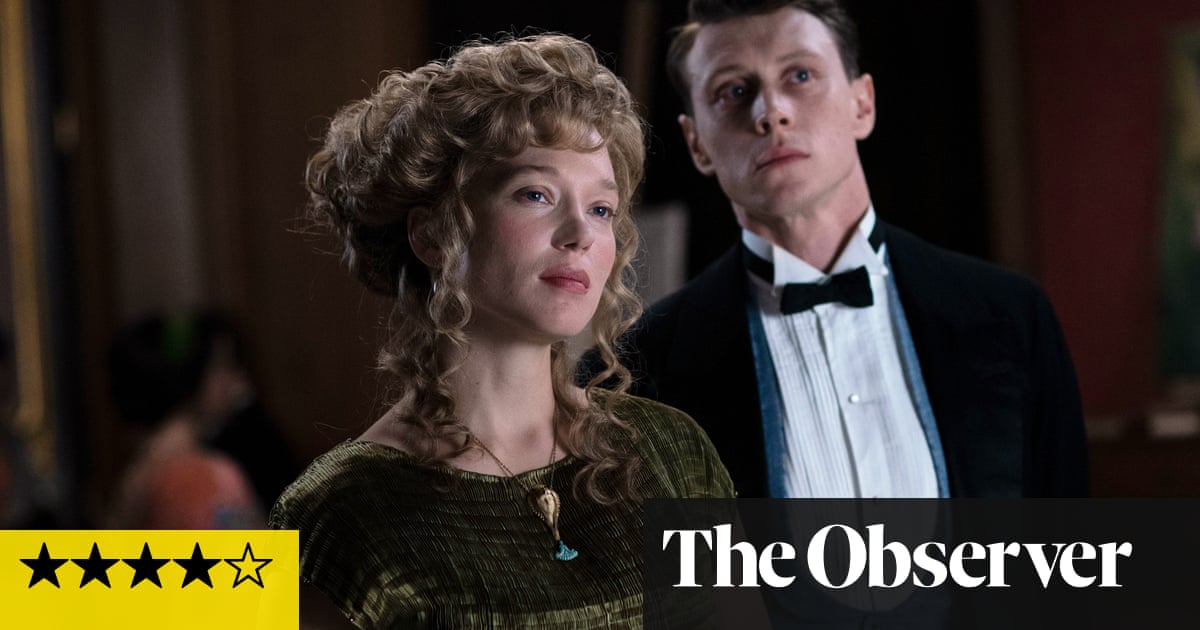Entertainment
The Beast review – Léa Seydoux mesmerises in wildly ambitious sci-fi romance

The choking grip of artificial intelligence on humanity is the starting point for Bertrand Bonello’s wildly ambitious, century-spanning, French and English-language story of doomed romance, subconscious fears and pigeon-based symbolism. It’s a theme – AI, that is, not the pigeons – that has been thoroughly mined in cinema of late, perhaps not surprisingly. After all, AI poses one of the more significant threats to the future of humankind. It’s the dystopian sci-fi premise that – literally – writes itself, given half the chance. But the eponymous beast in this story is not AI, and Bonello’s approach to the subject is rather more eccentric and original. It’s certainly the most ambitious of his films, which include the fashion biopic Saint Laurent and The House of Tolerance, about a turn-of-the-century Parisian brothel.
Elliptical, enigmatic and infused with a luxuriant melancholy, The Beast won’t be for everyone, but submit to its looping structure and beguiling dream logic, and this extremely loose adaptation of a novella by Henry James weaves a bewitching, if a trifle head-swimming spell. (It’s worth mentioning that the same novella, The Beast in the Jungle, was adapted into another film last year, a version that plays out entirely in a nightclub over several decades, directed by Patric Chiha and starring Anaïs Demoustier and Tom Mercier.)
Here, a sphinxlike and inscrutable Léa Seydoux is central to The Beast’s uneasy fascination. She plays the shape-shifting Gabrielle Monnier in three different time periods: a celebrated pianist and society beauty in Paris, 1910; an aspiring model and actor in Los Angeles in 2014. And in 2044, she’s a woman living in an AI-controlled society in which to be fully human is to be a lower-status entity in a world that aspires to be dispassionate, emotionless and as close as possible to the machine ideal.
The Gabrielle of 2044 is an intelligent woman forced to do the most stultifying of drudge work. To get a more challenging and rewarding role, she must submit to a kind of psychic purification process intended to divest her of not just her emotional baggage, but her emotions entirely. This is a world that has been pulled back from the brink of catastrophe, we learn, by ensuring that no decisions are made by people experiencing anger or fear. This seems reasonable enough until you learn that to effect this rule, nobody can feel anything at all.
The production and costume design departments work in tandem to create an oppressively tasteful coldness in the look of this section of the picture. Characters dress in emotion-dampening shades of muted beige and taupe; the architecture is all clean lines and no clutter, as though all the personality and individuality has been stripped from the world. Immersed in a bath of what looks like oil – an image that evokes Jonathan Glazer’s Under the Skin (another film that pushes the sci-fi genre into uncharted territory) – Gabrielle submits to a robotic probe in her ear and a tour of the trauma accumulated during her past lives.
Certain themes and elements become apparent. There’s the pigeon, for a start: a signifier, according to a fortune-teller, of an imminent death in the household. Dolls are another motif, from the flammable celluloid figures of 1910, created in a factory owned by Gabrielle’s husband, to Kelly (Saint Omer star Guslagie Malanda), a slightly sinister android doll companion for Gabrielle in 2044. But the main recurring element is a man named Louis Lewanski, played by George MacKay, acting in French and English with British and American accents.
In 1910, in an extravagantly ornamental vision of Paris shot on sumptuous 35mm, Gabrielle and Louis are on the brink of a grand affair. But, plagued by premonitions of disaster, Gabrielle can’t quite bring herself to commit. Meanwhile, a great flood threatens to engulf the city and its thwarted lovers.
The film’s vision of 2014 is glitchy, terminally online and achingly isolated. Gabrielle, housesitting a luxury modernist pad and failing to get work, spends her time staring, glazed, at her computer screen or dancing alone at a club. Louis is an “incel”, stewing in his sense of injustice and trawling the streets at night looking for fuel for his grievances against women. Once again, their encounter seems doomed to end in tragedy. In 2044, Louis is undergoing the same pre-purification interview process as Gabrielle, and he shows up in a nostalgic nightclub that dedicates itself to the music and fashion of a different era every night – they meet in 1972, and then again in 1963.
after newsletter promotion
The heady and elusive storytelling of The Beast means that its true nature remains as mercurial as the shifting identities of its central characters. But if there is a monster lurking in the shadows of these three linked stories, it’s the shapeless, paralysing fear that prevents each version of Gabrielle and Louis from accepting and living their truth.










